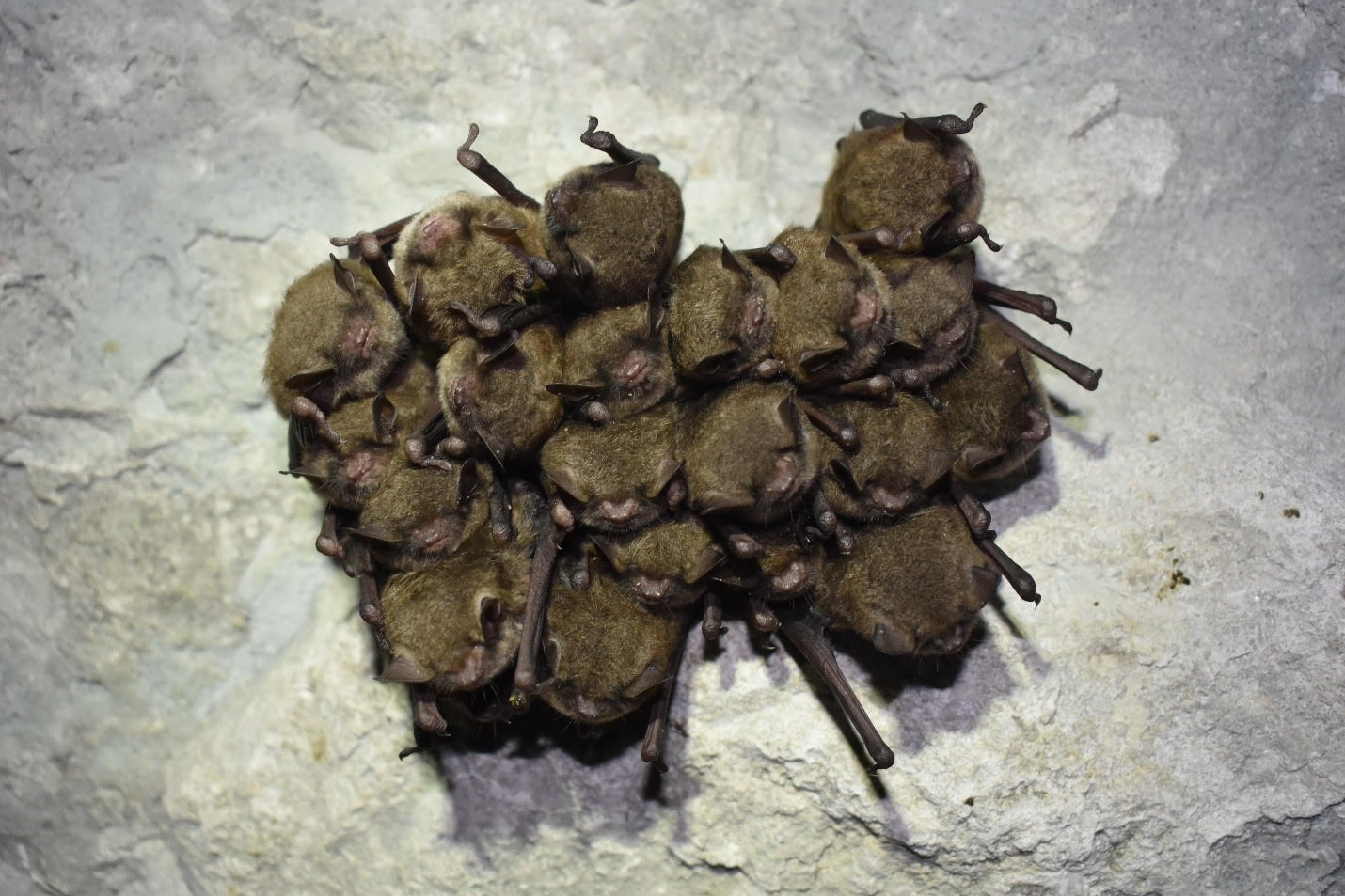Surveyors count more than 215,000 Indiana bats at Hannibal’s Sodalis Nature Preserve

HANNIBAL, Mo. — Bat biologists are celebrating the news the number of endangered Indiana bats at Sodalis Nature Preserve has increased almost 20 percent.
The bat census at Sodalis, conducted in February 2022, confirms its place as the country’s most important hibernation spot for this species with an estimated 215,296 Indiana bats.
Vona Kuczynska, biologist with the Missouri Ecological Services Field Office of the U.S. Fish and Wildlife Service, said researchers documented a total of 180,801 Indiana bats in the last survey conducted in 2019.
“We hope this increase is an indication of Indiana bats doing well and not declining due to white-nose syndrome,” Kuczynska said.
The census occurs every two years, with the exception of the last survey, which was delayed until 2022 due to COVID.
Biologists and volunteers conduct a count of Indiana bats in hibernacula — or hibernation sites where bats overwinter and wait out the insect-less months — across the species’ 22-state range. For the 2022 count at Sodalis, more than 45 surveyors gathered in Hannibal to receive instructions on the exercise. Counters came from the U.S. Fish and Wildlife Service, Missouri Department of Conservation, U.S. Forest Service, the Missouri Department of Transportation, the U.S. Army Corps of Engineers, the Illinois Department of Natural Resources, universities, consulting firms and conservation groups. Serving as guides were volunteers from the Cave Research Foundation, many of whom helped map the mine when the property was first acquired by the City of Hannibal.
The group formed teams and divided up responsibilities — bat counter, photographer, data recorder —and headed into the mine, each assigned to a specific area within the maze-like interior. Armed with cameras, headlamps and maps, the teams spread throughout the different parts of the mine. Overhead, clinging to the ceiling, sometimes within arm’s reach, were the bats. In some places, the ceiling appeared to be carpeted in bats.
Within an assigned area, a team photographer snapped photos of larger clusters while counters tallied small groups and the occasional single bat. Recorders made notes of numbers and location and logged photo numbers for future counting. Working quickly, the teams moved through the mine as quietly as possible, speaking in whispers to lessen disturbance to the bats resting overhead. Within four hours, the survey was complete. The humans moved out, leaving the bats in silent darkness to rest until the warm spring weather and insects would draw them out.
Back in offices and labs, biologists counted bat noses in photographs and tallied numbers from log sheets. Kuczynska helps coordinate the survey with the help of Missouri Department of Conservation. She reviews the data and looks at population trends through time after surveys are completed. Bats in Missouri continue to decline because of white-nose syndrome, a fungal disease introduced from outside the country that is responsible for killing millions of bats in the United States.
“The fungus likes cold climates and thrives on the walls of caves and mines during the winter,” Kuczynska said. “Unsuspecting bats return to the mine in the fall and collect the fungus on their bodies during hibernation through contact with cave walls. The fungus covers their skin, growing and spreading over their bodies for the duration of the winter. Some bats succumb to the fungus disease and are unable to survive the infection.”
However, as biologists have found, exposure to the fungus does not affect different types of bats the same way. Dramatic declines have occurred in populations of northern long-eared bats, tricolored bats and little brown bats.
For example, in 2015, 4,507 little brown bat and 81 northern long-eared bat were counted during the Sodalis survey. Only 340 little brown bats and just two northern long-eared bats were found in the surveyed sections of the mine in 2022, demonstrating precipitous declines. Tricolored bats also showed a steady decline from 1,257 to 420.
Indiana bats are also susceptible to the disease but are either generally less susceptible or the declines will take a longer time to affect the population compared to other types of bats. The last survey, which showed an increase in population size, may be an indication that Indiana bats in the mine can better resist white-nose syndrome disease and that the mine is providing a safe refuge for the colony.
Kuczynska said this would be good news for the thousands of Indiana bats at Sodalis, which are now waking out of hibernation and preparing to migrate to their forested summering grounds in Missouri, Illinois and southern Iowa. Another explanation for the increase might be that bats from other winter caves are leaving their old hibernation sites and beginning to seek refuge at Sodalis. Survey results from other Indiana bat caves in Illinois, Iowa, and Missouri will soon provide the answer to this question.
Indiana bats are so named because the species was first discovered in Indiana, although they occur in many states in the eastern half of the country. Their scientific name, Myotis sodalis, is also appropriate: Myotis for mouse-eared and sodalis for companion. These tiny mammals gather in tight clusters to hibernate, from just two or three to several hundred individuals.
While Indiana bats seem numerous at Sodalis and a few other hibernacula, the species has experienced drastic declines, according to Kuczynska. In 1967, with a population estimate of 880,000, the Indiana bat was among the first species recognized as endangered in the United States. Today’s population is thought to be less than half that size.
Despite declines to some species of bats, Sodalis Nature Preserve is providing a safe resting place for Indiana bats for more than six months out of every year. It is a hilly 200-acre park just blocks from downtown Hannibal. Sodalis Nature Preserve was acquired by the City of Hannibal in 2016, the result of work by the U.S. Fish and Wildlife Service, Missouri Department of Conservation, the Conservation Fund and Iowa Natural Heritage Foundation to conserve the abandoned mine for endangered bats. Purchase of the property, and its ongoing management, is provided by the Flanagan South Pipeline Mitigation fund. Access to inside the mine is restricted for research and monitoring purposes only, but visitors are encouraged to enjoy the park’s paved and wooded trails.
The City of Hannibal encourages residents to be good stewards of the environment and local wildlife by reporting instances of trespassing into the mine or gate vandalism. In such instances, contact Hannibal’s Parks & Recreation Department at 573-221-0154 or the Hannibal Police Department at 573-221-0987.
Miss Clipping Out Stories to Save for Later?
Click the Purchase Story button below to order a print of this story. We will print it for you on matte photo paper to keep forever.

